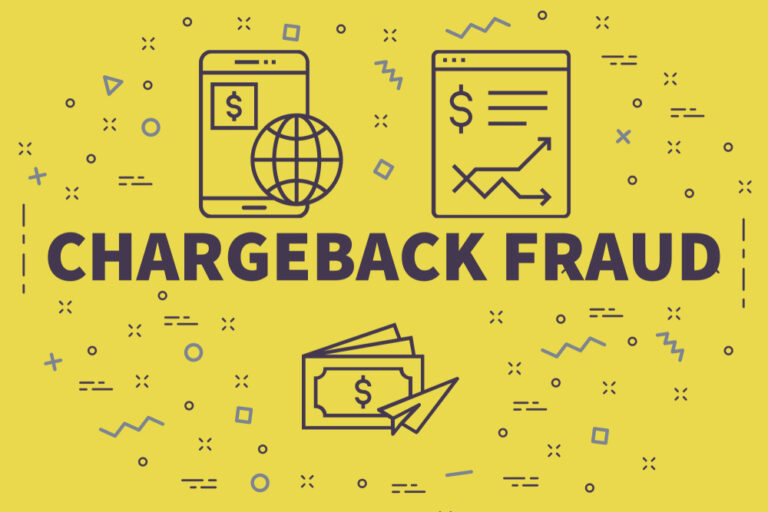Partial Chargebacks = Full Threat

The end of the month approaches. And what a month it’s been. You’ve locked up sales and business is humming. But now you’ve got a bunch of chargebacks to sort through. Glancing through them, you see that some are only partial chargebacks. You can ignore those, right? They’re not a big deal, they’re partial after all.
Unfortunately, partial chargebacks are just as serious of a threat as full chargebacks. The revenues at stake from the sale itself may be partial, but when it comes to chargebacks, those revenues often aren’t the most important consideration. For one, even with partial chargebacks, you must still pay the full chargeback fees. Then there’s your chargeback ratio. If this ratio gets too high, payment processors may refuse to work with you or could charge higher processing fees. Unfortunately, as far as the ratio is concerned, a partial chargeback is the same as a full chargeback.
Ultimately, partial chargebacks are a grave threat and if you don’t take steps to mitigate them, they could cost you dearly in the long-run. With a proactive approach and the right tools, however, it’s possible to prevent and reduce chargebacks, including partial ones. We’ll provide tips for reducing chargebacks and also outline the partial chargeback process. But first, let’s take a quick peak at chargebacks in general. From there, we can dig into the specifics of partial chargebacks.
Chargebacks Defined
A chargeback is basically a reversed payment executed by the financial institution that issues debit or credit cards to your customers, the cardholders. Crucially, banks do not need permission from the merchant to reverse the payment. In a sense, a chargeback is an unauthorized refund and one that the merchant can’t fully control.
Congress has enshrined chargebacks into law in the United States. Banks and credit card issuers must offer customers recourse in the event of unauthorized charges and other problems with electronic payments. In practice, this means chargebacks. Other countries have put chargebacks into law as well. It’s smart to check out local chargeback laws and regulations in any market that you serve.
Partial Chargebacks Versus Full Chargebacks
Often, when a charge is disputed, the cardholder will dispute the entire charge. This is a full chargeback. Not only might the merchant lose the full amount of the purchase, they will also get hit with chargeback fees, which banks tack onto chargebacks to cover costs. Every time a customer files a chargeback, staff members at the financial institution have to review and investigate it. Chargeback fees defray these costs.
With a partial chargeback, the full amount of a purchase is not in dispute. Instead, only part of the chargeback is being challenged. Let’s say there’s an online shoe retailer called Zammo Acme Shoes. A customer visits the website, and orders two pairs of shoes, paying $100 for each pair of shoes, and thus a total of $200.
A week later, the shipment arrives but the customer opens the box and finds only one pair of shoes. The customer checks Zammo Acme Shoes’ website but can’t find any information on the missing pair of shoes. They try to contact the merchant’s customer service department, but end up stuck waiting on the phone, unable to contact an actual person.
So the customer files a chargeback with their card issuer. However, because one pair of shoes did arrive, they file a partial chargeback for the missing pair. In this case, only $100 of the original $200 dispute is in question.
Potentially losing $100 in lost sales revenues is better than losing $200. Still, partial chargebacks are as serious of a long-term risk as full chargebacks even if the disputed charge itself is smaller. Why? Because fees quickly add up and a rising chargeback ratio is a major threat. Let’s take a closer look at partial chargebacks and the fees they incur.
Partial Chargeback Still Result in Full Chargeback Fees
Merchants will be assessed full chargeback fees even if they’re facing a “partial” chargeback. Ultimately, for banks, dealing with a partial chargeback is essentially the same as dealing with a full one. They will still have to investigate the transaction, the charges, the customer’s claims, and the merchant’s claims. This results in labor expenses, which are then passed on in the form of chargeback fees.
Unfortunately, merchants will pay chargeback fees even if they win a chargeback dispute. These fees typically range from $20 to $50. These fees can increase, however, if your chargeback ratio crosses certain thresholds. In fact, chargeback fees could rise to $100 or more.
Chargeback fees can greatly increase the costs of chargebacks. If you get hit with a chargeback concerning a small $10 purchase, say a pair of socks, you could end up paying $60 or more once chargeback fees are tacked on (assuming a $50 chargeback fee). Yet even that doesn’t account for the full costs and a rising chargeback ratio could cost you much more in the long run.
With Your Chargeback Ratio, Partial Chargebacks Are the Same as Full Chargebacks
Despite recouping money via fees, card issuers generally don’t want to deal with the headaches associated with chargebacks. As such, if your chargeback ratio -AKA chargeback rate- gets too high, your payment processing costs could increase dramatically.
This is because the business may be identified as a “high risk” merchant. Once this happens, your current bank may increase fees or they could drop you. If you have to find a new acquiring bank, you may have to work with an organization that specializes in high risk merchants, and that often means paying increased fees.
It doesn’t take many chargebacks to get designated as a high risk merchant. Some merchants get designated high risk before they even start processing, based on their Merchant Category. But any business with a chargeback ratio above just one percent is considered “high risk” by payment processors. If your rate tops 3 percent, many processors will outright refuse to work with you. That said, to find specifics, you will have to check with individual banks.
Crossing the 1 or 3 percent threshold can happen very quickly. If you process 500 transactions a month, getting hit with just 5 or 6 chargebacks could result in increased processing fees. And if you get hit with only 16 chargebacks, many payment processors will drop you.
Rising Processing Costs Can Sink Businesses
Even if your payment processor doesn’t drop you, rising fees will threaten your business. Increased processing costs mean that merchants will have to pay more for each transaction, including those transactions that don’t result in chargebacks. Rising costs can erode a merchant’s competitiveness as they are forced to absorb the costs or pass them to customers.
How much extra might a high risk merchant pay in fees? The rates can vary from processor to processor, and they tend to be rather tight lipped about fees. However, it’s not uncommon for high risk merchants to pay an extra 2 percent in fees. At first glance, 2 percent may not seem like much. Yet the costs will add up and eat into your profit margin.
Fortunately, merchants can take steps to reduce the risk of full and partial chargebacks.
How to Reduce Partial Chargebacks
Various factors could result in your business getting hit with chargebacks. Sometimes, these factors are largely in the merchant’s control. An unresponsive customer service department, poor product descriptions, or a lack of shipping information, among other things, can all produce chargebacks.
Still, many chargebacks stem from so-called “friendly fraud,” which occurs when a cardholder files a chargeback in an effort to get free stuff (meaning the goods or services they bought from the merchant). With chargebacks, a fraudster can receive the ordered stuff, then file a dispute with their bank. If the bank approves their chargeback, the cardholder will have their money returned and will also get to keep the goods and services rendered.
Often, fraudsters will file for a full chargeback in an effort to get all the money from the transaction back. That said, they could file for a partial chargeback. And as we’ve already seen, a partial chargeback still has a big impact on merchants.
Yet many partial chargebacks are the result not of fraud, but instead misunderstanding or a merchant error. Fortunately, by taking the right steps now, it may be possible to reduce chargebacks, and especially, partial chargebacks. Let’s take a look at some reduction strategies.
Keep Your Customers In The Loop
Some partial chargebacks are the result of miscommunication. If someone orders four sweaters from an online retailer, they may expect all four sweaters to arrive in the same shipment. However, the merchant may end up sending out multiple packages and they might not all arrive at the same time.
If the customer receives a shipment from the retailer but finds only two sweaters, he or she might think that the other two were lost or that the merchant didn’t properly fill the order. The customer might then file a chargeback. By providing shipment tracking information, you can reduce these risks. If a customer is worried about a lost shipment, they can quickly track down the packages.
Likewise, if your customer service department is responsive and easy to contact, customers might reach out to your company first to resolve issues. However, if touching base with your customer service department is a hassle, the purchaser might simply turn to their card issuer.
Ultimately, improving communication is one of the more effective ways to reduce partial chargebacks.
Manage Expectations
One of the best ways to ensure customer satisfaction and reduce chargebacks is fully meeting customer expectations. If you promise the sun but deliver the moon, customers may be left dissatisfied and could then decide to return their purchases or file a chargeback. After all, they didn’t receive what they expected.
Consider the four sweaters mentioned in the last section. If the product page for one of the sweaters shows a deep midnight but the sweater delivered is actually a lighter navy blue, customers could complain (to you or their bank). They might even request a chargeback. Likewise, if the product description claimed that the sweaters were preshrunk, but then one of the sweaters ends up shrinking after being washed, you may get hit with a chargeback.
Many other shortcomings or inaccuracies in your product descriptions could lead to a dispute. It’s smart to carefully comb through product pages and to ensure that everything is accurate. If customers do complain about mismatched expectations, it’s often wise to provide a quick and easy return process. This way, the customers might turn to the merchant first, rather than the card issuing bank.
Reduce Billing Errors
Another misstep that could lead to partial chargebacks is a billing error. Let’s say you offer a discount code for 25 percent off pants. A customer visits your website, sees the deal, and orders a pair of pants normally priced at $100. She plugs in the discount code and the payment portal shows that a $25 discount was applied.
The pants arrive and initially the customer is happy. However, while looking through her credit card statement she notices that the retailer charged her the full $100. Now, owing to this billing error, she may file a partial chargeback, seeking a $25 refund to cover the should-have-been discount.
Businesses will want to reduce billing errors as it’ll keep customers happy and prevent some chargebacks. If an error does occur, merchants should fix the mistake quickly. If you’re too slow, a customer may simply turn to their bank to file a chargeback.
That said, even if you work hard to mitigate chargebacks, you may still get hit with some. With that in mind, let’s briefly cover the dispute process for partial chargebacks.
What Does the Partial Chargeback Process Look Like?
The dispute process for a partial chargeback is the same as it is for a full chargeback. You can check out our in-depth guide on the chargeback process here. We’ll recap the process as well.
1. The Cardholder Contacts Their Bank
Chargebacks typically start when the cardholder contacts their bank. Banks often provide several ways for customers to get in touch regarding disputes, including email, chat programs, and phone numbers. Ease of access encourages customers to get in touch when needed. In some cases, banks may preemptively file a chargeback if they believe fraud or another serious problem has occurred.
2. The Bank Reviews the Dispute and Partial Chargeback
The bank will then review the customer’s complaint. Before filing a chargeback, the bank may ask the customer to first contact the merchant. At this stage, if the merchant doesn’t offer an easy-to-use return process, the bank could be more likely to file the chargeback.
If the chargeback goes forward, the bank will issue the customer a provisional credit and the transaction is debited to the merchant. Keep in mind, the merchant at this point has had no input in the dispute.
If the merchant uses a chargeback alert service, they will be able to resolve the matter before the chargeback is filed. Often, this means offering a refund or other solution. Preventing chargebacks can help keep your chargeback ratio low, so sometimes offering a preemptive refund is the smart move.
3. The Issuing Bank Contacts the Acquiring Bank
The issuing bank, meaning the bank that issued the card, will contact the business’s acquiring bank, which is the institution that accepts payments on behalf of the merchant. The issuing bank will then pass on the chargeback to the merchant. A reason code will be provided. From there, the merchant can look up the code to figure out what the dispute is about.
4. The Merchant Reviews the Partial Chargeback Claim
With the chargeback code in hand, the merchant can now review the transaction. At this stage, the merchant can either accept the chargeback or dispute it. If the merchant accepts the chargeback, they’ll lose the funds in dispute. They will also have to pay chargeback fees (typically ranging from $20 to $50, but high risk merchants may pay heftier fees). The business’s chargeback ratio will also rise.
Remember, with partial chargebacks, you still pay full fees and your chargeback ratio will rise the full amount.
5. The Merchant Files a Counterclaim Against the Partial Chargeback
If the merchant decides to fight the claim, they will put together a counterclaim letter. In this letter, the merchant will argue that the purchase was legitimate and that they upheld their end of the transaction. The merchant may also point out that the cardholder could have filed a return.
The merchant can furnish evidence in their counterclaim letter. For example, the merchant might share communications with the customer, IP addresses for the transaction, and shipping receipts.
6. The Card-Issuing Bank Makes a Ruling
The issuing bank will then approve or reject the chargeback. While the issuing bank has an incentive to side with their cardholders, namely keeping their clients happy, banks may rule in favor of the merchant if compelling evidence is presented.
If the bank rules in favor of the cardholder, the provisional refund is approved. If the merchant wins the case, the provisional refund is reversed and the merchant gets the funds in dispute. Either way, the business will pay chargeback fees and their ratio will rise.
7. Both the Business and Cardholder Can Appeal
No matter the outcome of the first chargeback claim, the merchant and the cardholder can both file an appeal. If new evidence is found, it can be presented during a “second chargeback.” Essentially, the process outlined above is repeated.
The card network can also be brought in as a neutral party to resolve the dispute. The card issuer’s ruling is, for all intents and purposes, final. The losing party, either the business or the customer, will have to pay fees to the card network. These fees can cost hundreds of dollars.
Even after the card issuer makes a ruling, the cardholder or merchant could file a claim in court. Disputes are not legally settled through the chargeback process, instead the payment method is under question. Courts can settle matters, legally speaking.
Conclusion: Partial Chargebacks Are a Full Threat
Chargebacks and disputes in general are a pain for businesses. Not only could you lose money from the transaction, but you may also lose inventory if products aren’t returned. Disputes also eat up time and labor as well.
That said, managing chargebacks is vital for protecting the business and partial chargebacks are about as much a threat as full chargebacks. Remember, with partial chargebacks, the merchant will still pay full fees and their chargeback ratio will rise by the full amount. If the merchant is designated as high risk, increased processing fees could cost the business a lot.
Fortunately, it’s possible to use tools like chargeback alerts to resolve partial chargebacks before they impact your ratio and result in fees. Dispute management platforms can also reduce the amount of time and labor needed to manage and fight disputes (including chargebacks).







